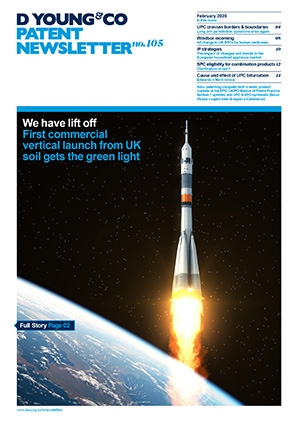European Commission drops the EU Regulation on standard essential patents
On 11 February 2025, the European Commission published its workflow for 2025 and in that document identified that it was not going to progress the implementation of the EU Regulation on standard essential patents (SEPs) (the SEP Regulation) because there was no foreseeable agreement on implementing the regulation.
It appears generally that the dropping of the SEP Regulation will be greeted with a sigh of relief, particular from SEP holders. Whilst the SEP Regulation aimed to improve licensing transparency and ease access to licences to the benefit of both SEP owners and implementers alike, there were questions over its practical implementation and whether it would actually achieve these aims. Whilst the SEP Regulation had laudable aims, perhaps it was too revolutionary as opposed to evolutionary. Certainly, there is still a need to improve access to licences for SEPs and to force implementers to agree licencing terms for SEPs.
One of the issues with the SEP Regulation was trying to figure out how it would work in practice for both SEP holders to license their patents and implementers wishing to gain access to technology by licensing SEPs. Without doing a full analysis of the SEP Regulation itself, some of the main points of controversy can be identified as:
- A requirement to declare a patent, which was considered by the owner to be essential to a standard, so that this could be included on a register of SEPs managed by the EUIPO. The Regulation required registration at the EUIPO before that patent could be enforced in a competent court, which could be the UPC or a German court that can grant injunctions. This seems onerous, although it is to be noted that this is not very different to the approach taken by standards bodies such as 3GPP to require patent holders to declare their patents and agree to license on fair reasonable and non-discriminatory (FRAND) terms.
- With an aim of increasing transparency for licensing SEPs, the SEP Regulation included provision for aggregate royalty rates to be published on the SEP Register, including those settled by a competent court (UPC or national court). Whilst the intention was to promote transparency so that parties were clear on the licensing terms available, typically licensing agreements are confidential and SEP holders are very reluctant to share information about licenses agreed in order to preserve their future negotiating position.
- Once a patent had been declared and appears on the SEP Register, the owner would be bound into an assessment of essentiality of that patent and would agree to binding arbitration via contentious provisions under the SEP Regulation to settle a licence agreement and fix royalty rates.
Some commentators have said that the SEP Regulation made it too generous to implementers to gain licenses for SEPs, whilst others said it could favour large tech companies with significant SEP portfolios. Indeed it was not clear how the SEP Regulation could assist SEP holders in the same way that it could assists implementers. For example, how did the SEP Regulation assist an SME with limited resources to force an implementer to take a licence if that party was holding out because they had greater resources to resist licensing? In other words, whilst the SEP Regulation included provisions for allowing an implementer to obtain a licence from an SEP holder and avoid an injunction from the German courts, where was the balancing provision for an SEP holder to force an implementer to take a licence?
As we reported in our recent review of the decision of Panasonic v Xiaomi and Oppo
(dycip.com/frand-sep-xiaomi-panasonic), the UPC has now begun to settle licensing conditions for SEPs, which perhaps rivals the UK courts as a venue for a so-called FRAND trials. It will be interesting to see whether the European Commission revisits the SEP Regulation, particularly in light of the operation of the UPC and its willingness to not only hear SEP litigation but also set FRAND licensing terms.

